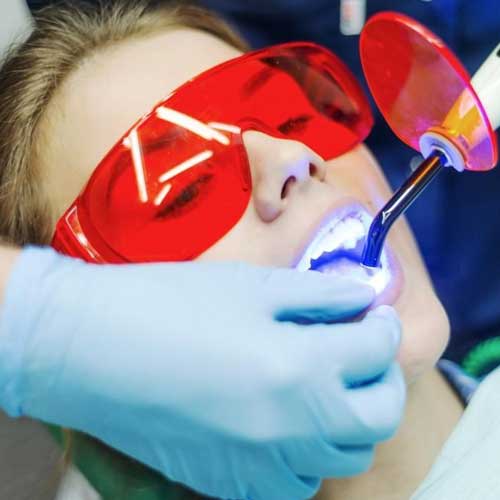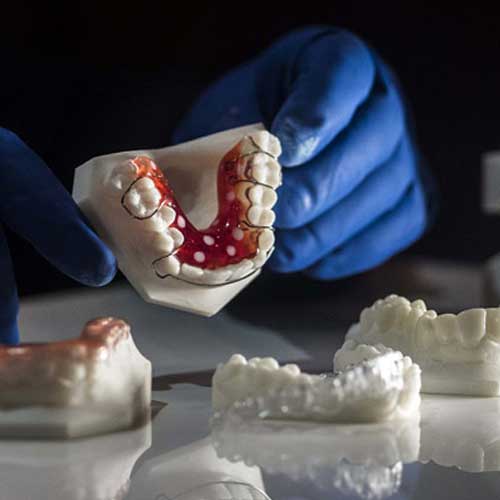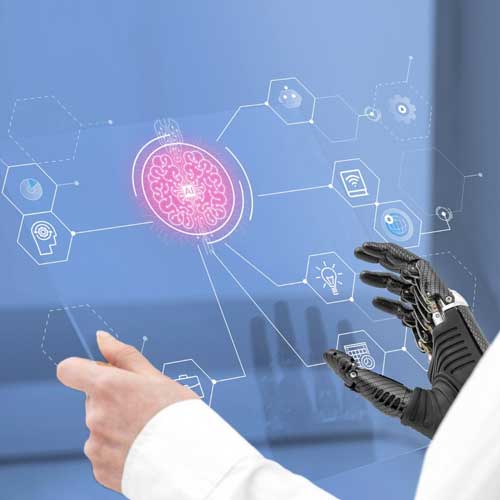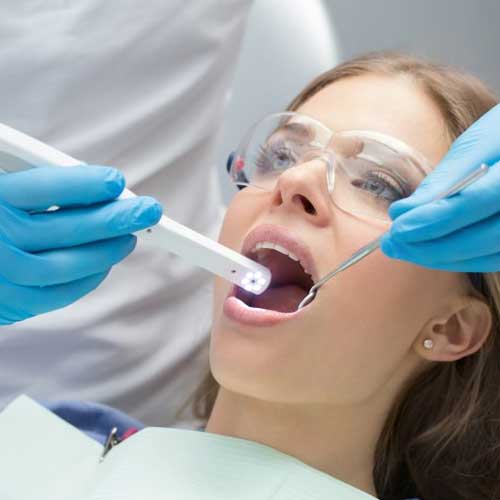
The field of dentistry is experiencing rapid advancements driven by technology, innovation, and evolving patient needs. These emerging trends are revolutionizing dental care, offering patients more effective, comfortable, and precise treatments. From laser technology to digital impressions, the future of dentistry is bright and filled with exciting possibilities. Here’s a look at some of the key trends transforming dental care today.
1. Laser Dentistry Precision and Comfort

Laser technology is revolutionizing various aspects of dental care, providing precise, minimally invasive treatments. Lasers are used for a range of procedures, including:
- Cavity Detection and Treatment: Lasers can detect cavities at their earliest stages and precisely remove decayed tissue, often without the need for local anesthesia.
- Gum Disease Management: Laser therapy can effectively treat gum disease by removing infected tissue and promoting faster healing.
- Teeth Whitening: Lasers can enhance the effectiveness of teeth whitening treatments by activating the whitening agents, leading to quicker and more dramatic results.
The use of lasers minimizes discomfort, reduces bleeding, and accelerates recovery times compared to traditional methods.
2. 3D Printing Customization and Innovation

3D printing is making waves in dentistry by enabling the creation of customized dental appliances and restorations. Key applications include:
- Dental Implants and Crowns: 3D printing allows for the precise fabrication of dental implants, crowns, bridges, and dentures, tailored to each patient’s unique anatomy.
- Orthodontic Appliances: Custom clear aligners and retainers can be created using 3D printing technology, providing a more comfortable and effective orthodontic treatment.
The ability to rapidly produce customized dental products reduces production times and improves the fit and function of dental appliances.
3. Artificial Intelligence (AI) Enhancing Diagnostics and Treatment

Artificial intelligence is becoming an integral part of modern dentistry, offering enhanced diagnostic capabilities and treatment planning. AI applications include:
- Diagnostic Tools: AI algorithms can analyze X-rays and other imaging data to detect cavities, fractures, and other dental issues with high accuracy.
- Treatment Planning: AI can assist in developing personalized treatment plans by analyzing patient data and predicting outcomes.
AI-driven tools help dentists make more informed decisions, leading to better patient outcomes and more efficient care.
4. Minimally Invasive Techniques Preserving Tooth Structure

he trend toward minimally invasive dentistry aims to preserve as much of the natural tooth structure as possible. Techniques include:
- Air Abrasion: This method uses a stream of air and fine particles to remove decay with minimal impact on healthy tooth structure.
- Resin Infiltration: This technique helps to strengthen and improve the appearance of early-stage cavities without drilling.
Minimally invasive approaches reduce the need for extensive procedures, promote faster healing, and enhance overall patient comfort.
The future of dentistry is being shaped by innovative technologies and trends that are enhancing patient care, comfort, and outcomes. From laser treatments and digital impressions to AI and regenerative techniques, these advancements are making dental procedures more efficient and precise. Staying informed about these emerging trends can help you make the most of the latest developments in dental care and ensure you receive the best possible treatment for your oral health.
As technology continues to advance, the possibilities for improving dental care are limitless, offering a brighter and healthier future for patients and practitioners alike.
5. Digital Impressions Accuracy and Convenience
Digital impressions are transforming the way dental molds and images are taken. Unlike traditional impressions that use messy, uncomfortable materials, digital impressions use a small, handheld scanner to capture precise images of your teeth and gums. Benefits include:
- Enhanced Accuracy: Digital impressions provide highly accurate and detailed images, leading to better-fitting restorations and orthodontic appliances.
- Increased Comfort: Patients experience less discomfort and gagging since digital impressions are more comfortable and quicker than traditional methods.
- Efficiency: Digital impressions streamline the workflow by eliminating the need for physical molds and allowing for faster turnaround times for custom dental work.
6. Teledentistry Access and Convenience
Teledentistry is emerging as a valuable tool for providing remote dental consultations and follow-ups. This trend is especially beneficial for patients in rural or underserved areas and includes:
- Virtual Consultations: Patients can have video calls with their dentist to discuss symptoms, receive advice, and even get preliminary diagnoses.
- Remote Monitoring: Dentists can monitor the progress of treatments and recovery through digital images and data shared by patients.
Teledentistry enhances access to care, reduces the need for travel, and allows for timely interventions.
7. Regenerative Dentistry Healing and Repair
Regenerative dentistry focuses on restoring and regenerating dental tissues, offering promising solutions for tooth repair and replacement. Key developments include:
- Stem Cell Research: Researchers are exploring the use of stem cells to regenerate dental tissues, such as enamel and dentin, and even grow new teeth.
- Biomaterials: Advances in biomaterials are enabling the development of substances that promote natural tissue regeneration and repair.
While still in the experimental stages, regenerative dentistry holds the potential to revolutionize tooth repair and replacement in the future.
